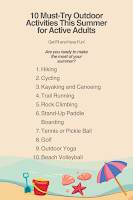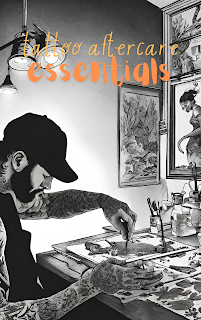10 Must-Try Outdoor Activities This Summer for Active Adults: Get Fit and Have Fun!

Summer is an excellent season for outdoor activities that promote physical health and mental well-being. Here are ten invigorating options for active adults looking to make the most of the warmer months: 1. Hiking: Exploring trails in national parks, forests, or local nature reserves provides a full-body workout while immersing oneself in the beauty of nature. Hiking can be adapted to various fitness levels, from leisurely walks to challenging treks. Adventure Hoodie 2. Cycling: Whether on a road bike, mountain bike, or even a hybrid, cycling is a fantastic way to improve cardiovascular health and enjoy scenic routes. Many areas offer bike trails and paths specifically designed for a safe and enjoyable ride. 3. Kayaking and Canoeing: Paddling on lakes, rivers, or along the coastline offers a peaceful yet physically demanding activity. These water sports engage the upper body and core muscles while providing a serene environment to relax and unwind. ...
